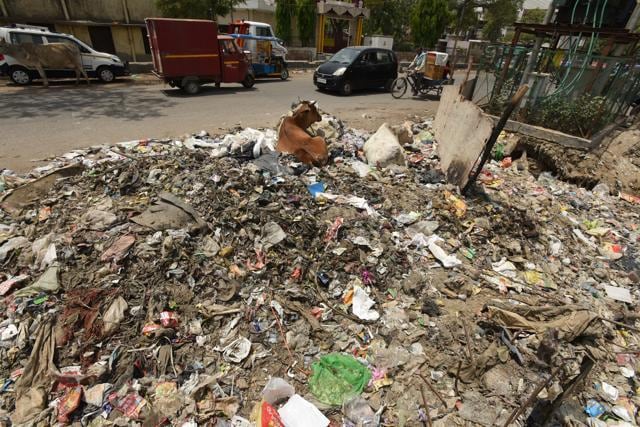Metro matters: The seat of Swachh Bharat campaign must come clean
In the Swachh Survekshan ranking of 434 cities released last week, the area under New Delhi Municipal Council — a VIP zone where at a police station Prime Minister Narendra Modi wielded the broom to start the Clean India drive — slipped down to the seventh spot.
For a city that launched the nationwide Swachh Bharat campaign three years ago, Delhi should have set the benchmark for any cleanliness contest by now.

Instead, in the Swachh Survekshan ranking of 434 cities released last week, the area under New Delhi Municipal Council — a VIP zone where at a police station Prime Minister Narendra Modi wielded the broom to start the Clean India drive — slipped down to the seventh spot. Last year, it came fourth when 73 cities were surveyed.
The rest of Delhi didn’t even make it to the top 100. The municipalities of east, south and north Delhi stood 196th, 202nd and 279th, while smaller towns such as Karnal, Kanpur, Gurgaon and Faridabad fared better.
The survey itself has been criticised for not following the progressive parameters of waste management. The Centre for Science and Environment (CSE) says the top three cities in the survey – Indore, Bhopal and Vishakhapatnam – do not segregate waste and dump it directly in landfills. In contrast, Alappuzha and Panjim, which have started segregation of waste at home and decentralised recycling and reuse of trash, have been ranked 380th and 90th.
Alappuzha and Panjim have no dumpsites or waste-to-energy plants because they do not need them. They convert their trash into compost or biogas and recycle plastic, glass, metals and papers, says the CSE which ranked Alappuzha and Panjim at the top in its own survey in 2016.
But even in that ‘alternative’ survey, Delhi was placed at the “bottom of the heap”. Piles of putrefying garbage and littered streets are part of the urban landscape across the national capital. Segregation and recycling of waste are still done mostly informally, although the NDMC has promised to launch its ‘100% segregation at source’ initiative in Lutyens’ Zone from June 5.

Recently, the NDMC also set up two vending machines in Connaught Place and India Gate to trade recyclables for money. The idea was probably borrowed from Curitiba’s Green Exchange Programme that covers almost 90% of the city. In Delhi, multiple layers of jurisdiction restrict such civic reforms to certain zones. In the NDMC’s case, even a full-scale initiative can benefit only 1.5% of Delhi’s population that produces 3% of the total garbage generated in the city.
Delhi has no citywide plan to tackle its garbage problem. The methane-filled, simmering landfills that get 3,800 tonnes of the 9,100 tonnes of garbage daily from all over the city are experiencing landslides due to overloading. Waste-to-energy is the latest buzzword in the government. But experts say that all municipal waste combustors release a number of extremely harmful pollutants.
Landfills, in fact, are the last option for waste management and recycling is the only way to reduce the load sent to dumpsites. It is encouraging that in their manifestos for the recently held civic polls, the AAP and Congress vowed to rid Delhi of landfills, and the BJP, which is back in power in the three corporations, promised to build roads out of the garbage.
But for such promises to materialise, Delhi must first minimise its garbage generation. We need laws to make recycling mandatory for residents. Although the municipalities have employed private contractors for recycling, much of this work is still done by rag-pickers. When it comes to integrating them into the system, authorities drag their feet.
These reforms could be fast-tracked if the government implemented the bylaws to the Solid and Plastic Waste Management Rules 2016. The rules make it mandatory to segregate garbage at source. It also proposes that people pay municipal authorities for garbage management services, and suitable fines and penalties are imposed on those who litter the street, open spaces, drain or water bodies. But Delhi’s municipalities are already a month late in firming up these bylaws.
If the authorities must come clean, we, Delhiites, must also face the mirror. Maintaining cleanliness cannot be just the government’s responsibility. Without the help and participation of willing citizens, would it be possible for Alappuzha or Panjim to invent their own models of successful waste management so quickly?
At a more fundamental level, to be able to discard judiciously, we must also bring ourselves to consume less. Who better than the residents of India’s power capital to beat the waste-and-want dynamics that have come to define our increasingly ‘disposable’ life?




